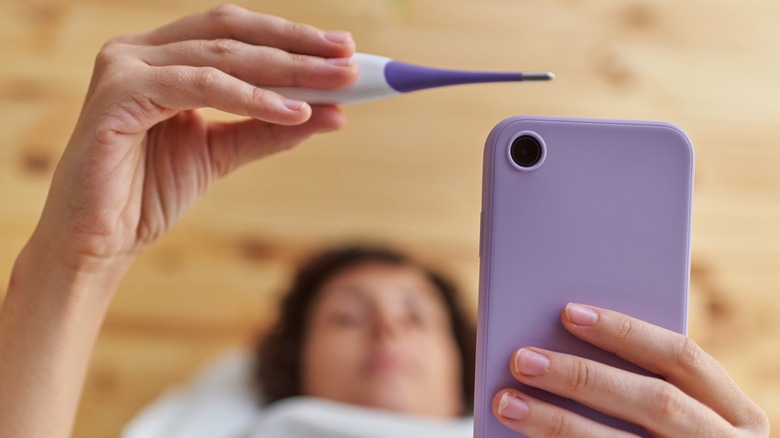What Does Body Temperature Have To Do With Fertility?
For those who are fascinated by the subtle inner workings of the human body, the connection between body temperature and fertility isn't a surprising one. We know a whole slew of factors, including age, weight, diet, medical conditions and more, can affect fertility (via The Bump). So why not body temperature too? For both women and men, understanding the role body temperature plays in their fertility is another tool that can be used to help them increase or decrease the chance of pregnancy.
In men, both sperm and testosterone are produced in the testicles, which are encased by the scrotum. According to Healthline, the ideal temperature for sperm production is 93.2 degrees Fahrenheit, a full 5.4 degrees F below the 'average' body temperature of 98.6 F. If the temperature of the scrotum gets too hot, both the quality of the sperm as well as its ability to successfully 'swim' towards the egg decrease. Research is limited on how sperm is affected when things get too chilly, but reports from farmers and veterinarians indicate that, not surprisingly, when bulls have gotten cold to the point of frostbite, their fertility has been harmed, not helped.
Tracking basal body temperature can show when ovulation has occured
In women with regular menstrual cycles, tracking basal body temperature (BBT) — the body's temperature when it is completely at rest — can provide an understanding of when ovulation has occurred. Reproductive endocrinologist Aaron Styer, founding partner and co-medical director of CCRM Boston, told Women's Health Magazine, "A woman's normal temperature when not ovulating is usually between 97 and 99 degrees Fahrenheit and may vary slightly among women. After release of the egg [ovulation], BBT increases by 0.5 to 1.0 degrees Fahrenheit due to the hormone progesterone."
By using a thermometer with medical-grade accuracy, taking the temperature at the same time each day (ideally first thing in the morning before getting out of bed), and charting the results, a slight but predictable pattern emerges that detects a rise in BBT at the time of ovulation. This method of fertility awareness can help women who are trying to conceive better understand their 'window of fertility' and when to have sex to increase their chances of conception.
Women who use this method often do so out of a desire for a more natural and holistic approach to fertility that doesn't include medications or hormones (via Cleveland Clinic). However, due to the chance for human error, Styer recommends against using this method as a form of contraception (per Women's Health Magazine).


